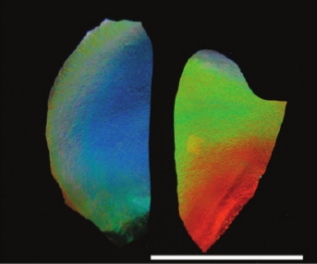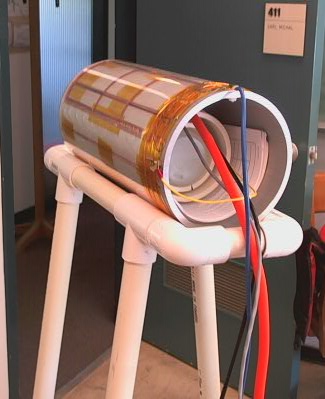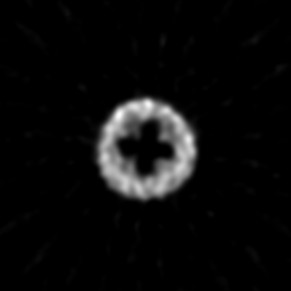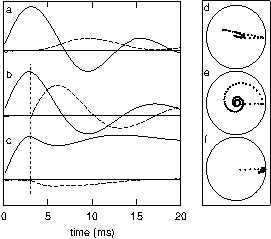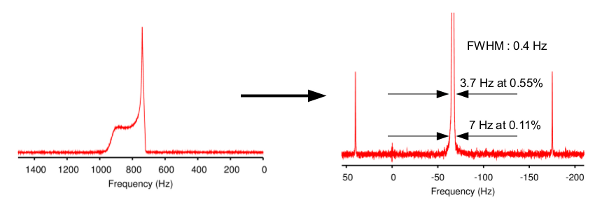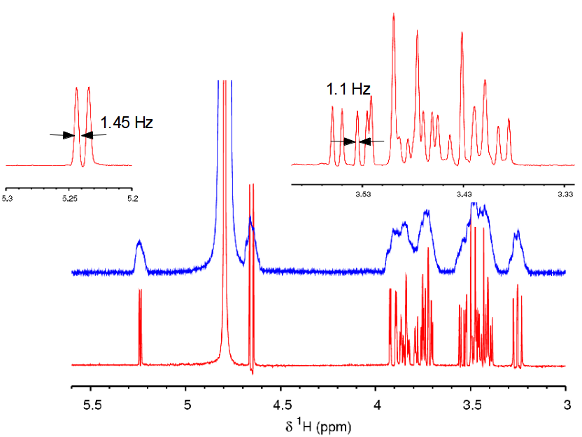Spider dragline silk.
Much of our work has focused on the dragline silk of the golden orb
weaver (Nephila clavipes). This outstanding biomaterial has an energy
to break greater than Kevlar, yet is synthesized from organic starting
materials and is biodegradable. We use solid-state nuclear magnetic
resonance to probe the conformation and dynamics of the various amino
acid components of the silk protein.
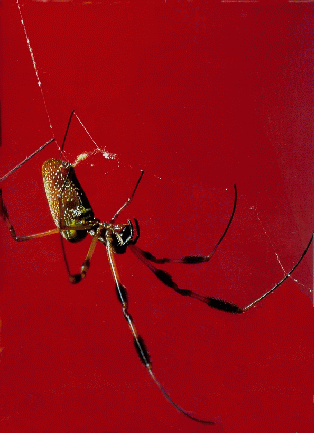
|
Nephila calivipes (golden orb weaver). Dragline silk of the
golden orb-weaving spider is synthesized in the major ampullate gland,
at the top of the spider's abdomen. The prespun silk is believed to
adopt a liquid crystalline form.
|
Resilin.
Resilin is an extraordinary protein-based rubber made by many
insects and other arthropods. We have investigated the protein structure
of natural resilin (from dragonfly tendons) and synthetic resilin-based
materials (using recombinant proteins). Better understanding of
resilin's high elastic efficiency, high extensibility, and long fatigue
lifetime will aid in incorporating these properties into synthetic
materials in the future.
Hagfish Slime.
When agitated, hagfish are able to release a specialized mixture of
proteins which, upon contact with water, produce an enormous quantity of
"slime". In addition to the slippery proteins commonly seen in mucous
secretions, hagfish slime also contains fine fibres (slime threads) with
interesting tensile properties. They are remarkably elastic but also
tough under high strain, where the α-helical proteins take on a more
extended β-sheet formation. By studying these materials, we hope to
learn more about the biophysics of intermediate filaments in other areas
of biology that are difficult to study, such as within cells.
Whelk Egg Capsules. Sea snails deposit their eggs in tough
protective capsules specifically adapted to their anticipated wear and
tear in the harsh marine environment. Busycon eggs are released in
metre-long helical strands known as mermaid necklaces that link up to
160 capsules. These are buffeted about for months by breakers at
velocities of up to 10 m/s along the seashores of the east coast of
North America. Given the punishing environment, how the Busycon
capsules shield the delicate embryos from damage is of fundamental
interest. Recent investigations of the Busycon capsule wall have found
it to consist of cross-plied sheets of protein fibres. with effective
shock-absorbing tensile properties. The large and reversible
extension of biopolymers in the Busycon egg capsule wall is strongly
suggestive of an elastomer. Elastomeric proteins have an essential
role in a variety of extracellular structural tissues and their
long-range elastic properties are useful, for instance, as shock
absorbers (for example, in hydrated dragline spider silks), for
elastic energy storage capacity in jumping and flying insects and to
ensure adequate elasticity in the integument and arteries of
various organisms.
Previous study supports the notion that high extensibility is due to a
fully reversible alpha-helix to beta sheet structural transition
on loading. We are currently using solid-state NMR to further our
understanding of the structure and structural transition that
occur on loading of this remarkable material.
Nanocrystalline Cellulose. We have been collaborating
with Dr. Wadood Hamad at FP Innovations to study the phase structure
of NCC. Our work suggests that NCC particles contain distributions of
environments distinguished by their structures and crystalline
perfection. Portions of the solid-state 13C NMR spectrum previously
assigned as disordered/surface appear inaccessible to D2O exchange
indicating that the NCC crystallites contain abundant disordered
domains in the interiors.
|

